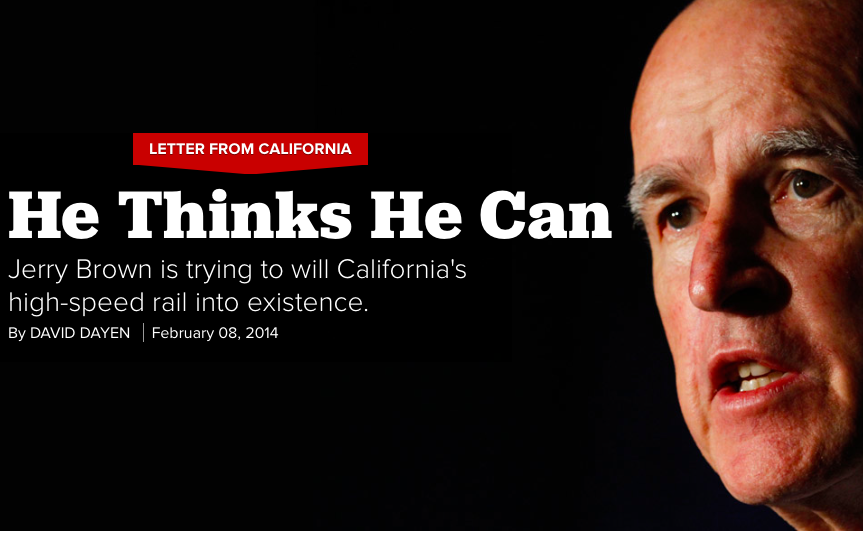The latest edition of Politico Magazine features a profile of California Gov. Jerry Brown and his ambition–now more than three decades old–to bring high-speed rail to the state. The happy coincidence of Barack Obama’s enormously wasteful and ineffective stimulus allowed Brown’s dream, inspired by a trip to Japan, to take root. David Dayen’s article casts Brown’s mission in almost heroic style, a brave battle waged against great odds.
What Dayen’s article never quite explores, however, is whether California actually needs high-speed rail of any kind–whether Brown’s bullet train model, or Elon Musk’s new “hyper loop” idea. The problem that high-speed rail is intended to solve–namely, traffic congestion–would barely be dented by high-speed rail. Congestion is not as much of a problem in long-distance driving as it is in the commutes within urban and peri-urban areas.
High-speed rail is also intended to reduce California’s use of fossil fuels, but as Dayen does note, environmental groups have concluded that the money spent on high-speed rail would be more effective if spent elsewhere, such as replacing gas-powered cars with electric vehicles in municipal fleets. (In fact, fossil fuel development is likely the best answer to California’s enormous debt problems, but that is a debate Brown is not willing to tolerate.)
At present, it is impossible to take a low-speed train from Los Angeles to San Francisco. The heavily-subsidized and underutilized Amtrak stops in San Jose. Dayen accepts Brown’s premise that a high-speed train that takes 2.5 hours to travel from one city to the other–as opposed to one hour by air and six by car–“would eliminate millions of car trips and plane flights.” Even liberal Californians are tired of such exaggerated boosterism.

COMMENTS
Please let us know if you're having issues with commenting.